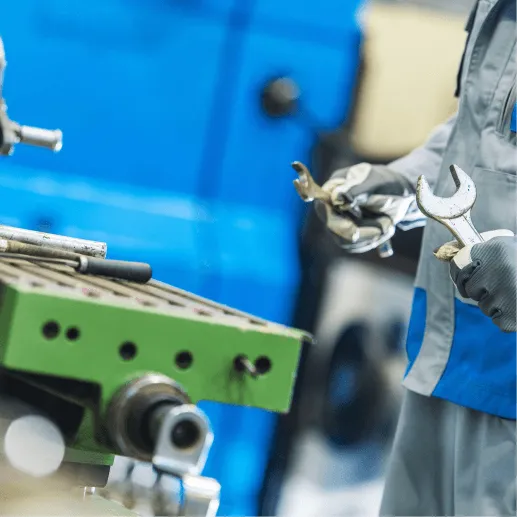Will you perform at an optimum level without getting proper sleep or rest? The answer is no, right? The same concept applies to machines, they cannot run forever. They need maintenance and service. Machine maintenance includes scheduled service, routine checks and emergency repairs. It is an important step that keeps mechanical assets running with minimal downtime. It helps businesses to minimise costly downtime and lower the risk of workplace accidents and injuries. There are two types of maintenance:
- Reactive Maintenance As the name suggests, it is a reaction to some failure. It refers to maintenance tasks performed after an asset has broken down. It refers to restoring assets to operating conditions as quickly as possible. It focuses on addressing the problems when they arise and are triggered by equipment malfunctions, setbacks, and failures.
- Predictive Maintenance You must have heard the phrase “prevention is better than the cure” predictive maintenance has the exact phrase in its soul. It is a proactive maintenance technique that uses real-time asset data, historical performance data, machine learning and artificial intelligence to predict asset failure. Therefore, maintenance work can be scheduled and performed before an asset is expected to fail.
Constant reactive maintenance can waste a large sum of money each year due to consistent, proactive repairs. Unplanned asset failure is stressful, time-consuming and hurts the employees’ morale. To combat these, asset-intensive industries are turning to preventive maintenance to avoid equipment failures and extend the equipment’s life.
The preventive maintenance is based on the manufacturer’s recommendations and periodic checks. It involves replacing parts and inspections by qualified technicians on the shop floor, ensuring that the machines run efficiently.
How to Digitise Machine Maintenance?
The functioning of most of the apparel industry is the same; therefore, the blueprint we will discuss applies to most of them. Let’s discuss the steps in digitising machine maintenance on the production floor.
- Enables a Digital Checklist- Individual machines have different life cycles and maintenance-related requirements. Some machines may have customised fixes that require experienced technicians. Making a checklist of all this information ensures that the information is available to all operators through a digital platform.
- Get Rid of Paper Whiteboards- The next step is to identify where the data is collected on paper. Using paper data you cannot track machine failure and maintenance work in real time. Start integrating intelligent systems that can collect data digitally in order to track equipment failure and maintenance in real time.
- Bring Machines Online- Bringing all the machines online is the second step in preventive maintenance. You can easily integrate each machine into the central system with smart sensors and IoT devices. This will allow you to get an accurate reading of machine up-time and overall equipment effectiveness.
- Bring Humans in Loop- Tracking machines is important but you have to track humans too. You must bring every staff member online to identify the loopholes in the workforce that is working on the production floor.
- Consider Bottlenecks & Defect Rate- Even if the machine runs at maximum efficiency, there can be many bottlenecks and higher defect rates. Manufacturing processes are deeply related activities, so monitoring each activity in detail will help optimise all the manufacturing processes from start to finish.
- Collect & Visualise the Data- The next step is to streamline how you collect and visualise the data. Build a dashboard page that allows everyone to get on the same page. A centralised dashboard allows you to track production quotes, machine up-time and downtime. Using this, you can also find areas that need improvement.
We all want to stay healthy, so we are up and running when required. We expect the same from the machines around us. For machines to operate at maximum efficiency, proper maintenance is essential, it is an integral part. Integrating Stitch MES allows the businesses to inspect systems regularly and schedule minor repairs before they become expensive and detrimental to production. With a capable system, your business may avoid costly downtime and disruption to the production process.



